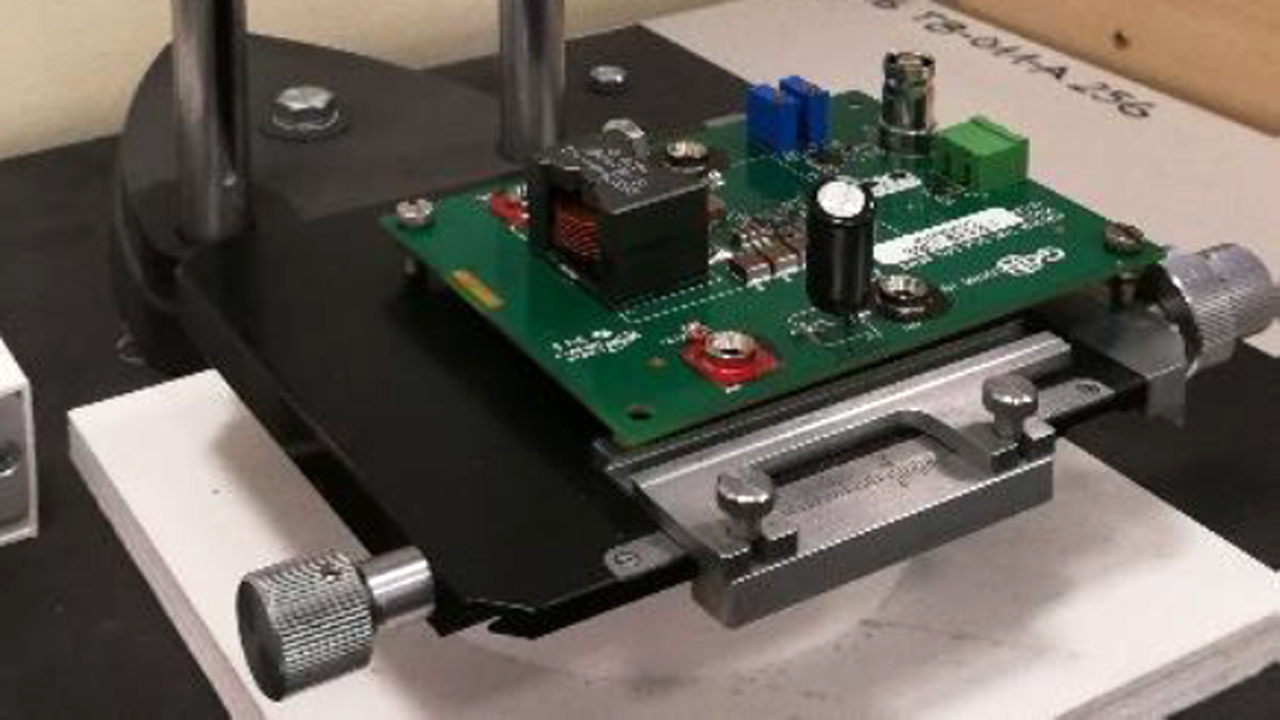Methods and low-cost single and multiply-detector IR heads for thermal management of electronics and microelectronics systems, circuits and devices

Introduction
Elevated temperature is the dominant cause of electronic systems failures, accounting for 55% of them. Thus, there is a need for thermal characterization of electronic circuits. One of main methods of describing their thermal properties is the thermal impedance approach. The mathematical foundations for such measurements were laid down in the JEDEC JESD51 standards series. A system for thermal impedance measurements using a fast, single detector IR sensor was designed and tested, along with dedicated software for thermal characterization of electronic circuits, based on upper surface temperature measurement.
- Methods
The proposed procedure for determining the tested circuit thermal impedance in the frequency domain has been divided into several steps. A one-dimensional heat flow is assumed. The first step Measurement, where the thermal step response of the circuit is measured at its surface using a fast IR radiation sensor. The second step is Model, where a model of the structure is created and simulated, in order to obtain a temperature rise curve T(t) matching the measurement results. Thermophysical and geometrical parameters of the circuit as well as boundary conditions, such as heat transfer coefficients and power dissipation are taken into account. The model parameters are optimized, until obtaining measured and modeled temperature curve match with acceptable accuracy. The last step is Model *, where the circuit thermal impedance at the heat source is obtained, being a standard approach in electronics industry for thermal description of electronic circuits. Using a dedicated software, that thermal impedance is presented in graphical form as the distribution of thermal time constants, Nyquist diagram and structural functions.
- Results
We have recently developed the new method for the measurement thermal impedance using low-cost single-detector MWIR head for dynamic temperature measurements on the outer surface of the power device or circuit case. By thermal modelling, it is possible to get temperature evolution in time inside the thermal object, in the heat source. A few thermal models were considered during the research: analytical and numerical, 1D and 3D, compact and physical. Finally, due to the reasonable compromise between accuracy and execution time of simulation, the compact model was selected. Using the thermal impedance of the thermal object, it is possible to obtain the spectrum of thermal time constants to characterize the device thermally and localize the possible failures in the multilayer structure.
- Conclusions
The knowledge gained during the research will allow for further development of proprietary software and measurement setups dedicated for thermal characterization of electronic circuits and to continue the research in this domain, taking into account the coming developments of semiconductor technologies. The development of a multiply-detector IR measurements system is also planned.
- Contact
- Prof. Bogusław Więcek
 , e-mail: This email address is being protected from spambots. You need JavaScript enabled to view it.
, e-mail: This email address is being protected from spambots. You need JavaScript enabled to view it.
- Michał Kopeć, M.Sc., e-mail: This email address is being protected from spambots. You need JavaScript enabled to view it.
- Dr. Marcin Kałuża
 , e-mail: This email address is being protected from spambots. You need JavaScript enabled to view it.
, e-mail: This email address is being protected from spambots. You need JavaScript enabled to view it.
- Prof. Bogusław Więcek
- Publication
- M. Kopeć, B. Więcek,"AC temperature estimation of power electronic devices using 1D thermal modeling and IR thermography measurements, 15th Quantitative InfraRed Thermography QIRT 2020, Porto, 2020.
- M. Kałuża, Impact of high emissivity paint layer on thermographic measurements of electronic circuits thermal impedance, 15th Quantitative InfraRed Thermography QIRT 2020, Porto, 2020.
- M. Kopeć, B. Więcek, Low-cost IR system for thermal characterization of electronic devices, Measurement Automation Monitoring, vol. 64, no. 04, pp. 103-107, 2018.
- M. Kopeć, R. Olbrycht, P. Gamorski, M. Kałuża, The influence of air humidity on convective cooling conditions of electronic devices, IEEE Transactions on Industrial Electronics. vol. 65 , issue 12, pp. 9717 - 9727, 2018.
- M. Kałuża, B. Więcek, G. De Mey, A. Hatzopoulos and V. Chatziathanasiou, Thermal impedance measurement of integrated inductors on bulk silicon substrate, Microelectronics Reliability, vol. 73, pp. 54-59, 2017.
- I. Papagiannopoulos, V. Chatziathanasiou, A. Hatzopoulos, M. Kaluza, B. Wiecek, G. De Mey, Thermal analysis of integrated spiral inductors, Infrared Physics & Technology, vol. 56, pp. 80–84, 2013.




